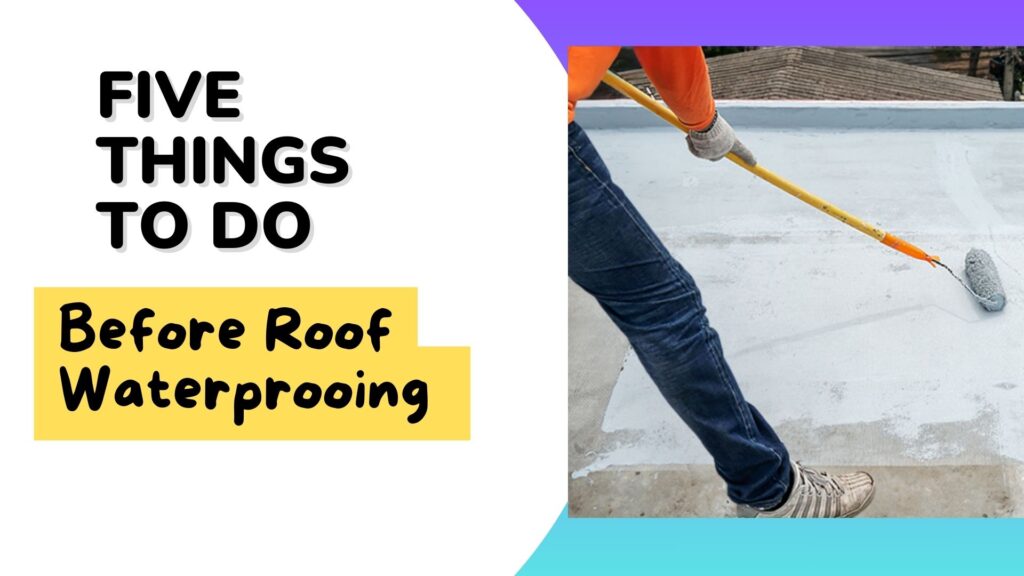When heavy rain pours, your roof becomes the first line of defense against nature’s elements. However, even the sturdiest roofs can develop leaks under the relentless onslaught of water.
As a homeowner in Singapore, where tropical downpours are frequent, it’s crucial to understand why roof leaks occur during heavy rain and how you can quickly address them to prevent further damage.
To get professional services, Contact us (+65 9821 1413) today for reliable roof waterproofing services and ensure your home stays protected from heavy rain. Chat On Whatsapp
6 Quick Fixes: Roof Leaks in Heavy Rain
1. Use a Tarp
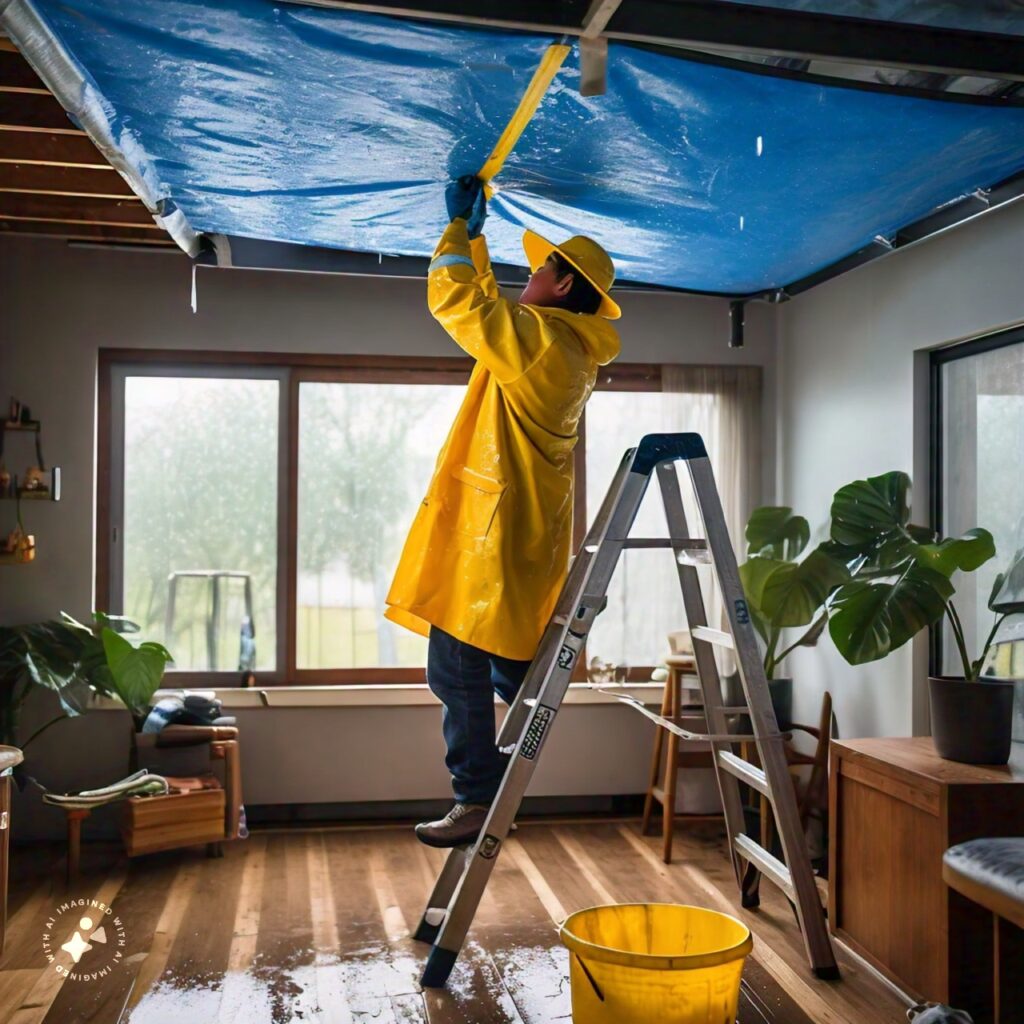
What You Need:
- A large tarp
- Heavy-duty duct tape or bungee cords
How to Do It: If you notice water dripping from your ceiling during a heavy rainstorm, the quickest way to stop the leak is to cover the affected area with a tarp. Secure it tightly with duct tape or bungee cords. This will keep most of the water out until you can get a permanent fix.
Why This Happens: Sometimes, roofs develop small cracks or holes that let water seep through. This can be due to aging materials, harsh weather, or poor maintenance.
2. Seal with Roofing Cement
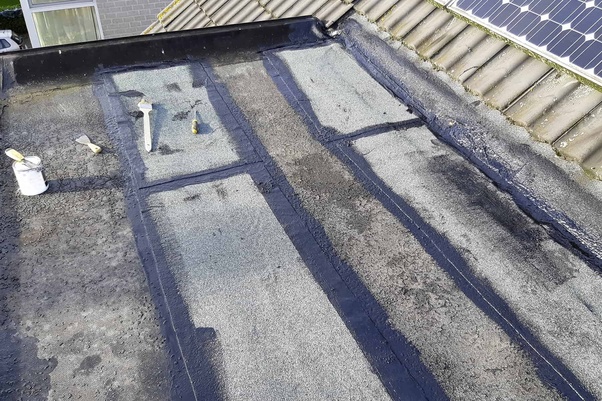
What You Need:
- Roofing cement
- Putty knife or caulking gun
How to Do It: If you can safely access the leak from inside your attic, apply roofing cement to the area where the water is entering. Use a putty knife or caulking gun to spread the cement evenly over the crack or hole.
Why This Happens: Leaks often occur around roof penetrations like chimneys, vents, or skylights. The seals around these areas can deteriorate over time, allowing water to sneak in.
3. Apply Waterproof Sealant Tape
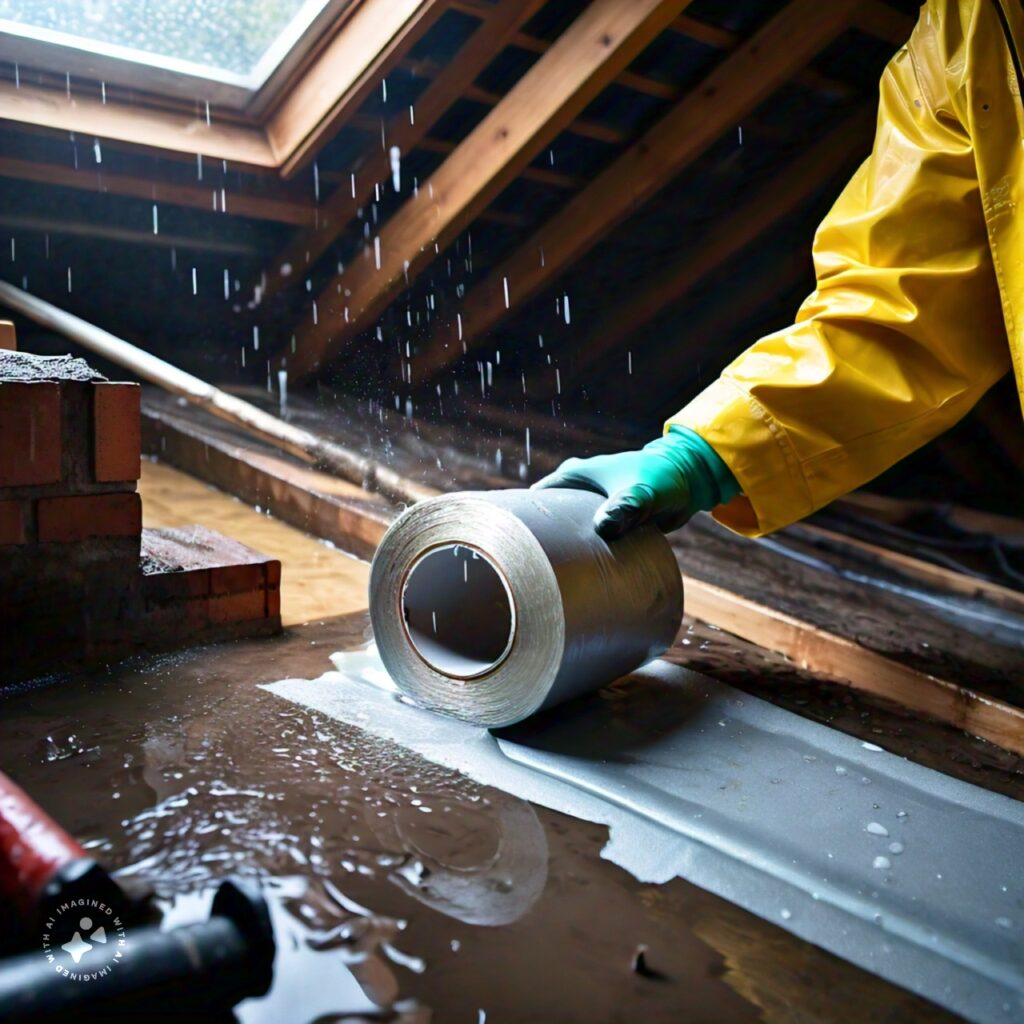
What You Need:
- Waterproof sealant tape
- Scissors
How to Do It: Cut a piece of waterproof sealant tape and place it over the leaking area. Press down firmly to make sure it sticks well. This tape is great for emergency repairs because it can stick even in wet conditions.
Why This Happens: Flat roofs or roofs with shallow slopes are particularly prone to leaks because water doesn’t run off as quickly, leading to more wear and tear on the roofing materials.
4. Clear Debris from Roof
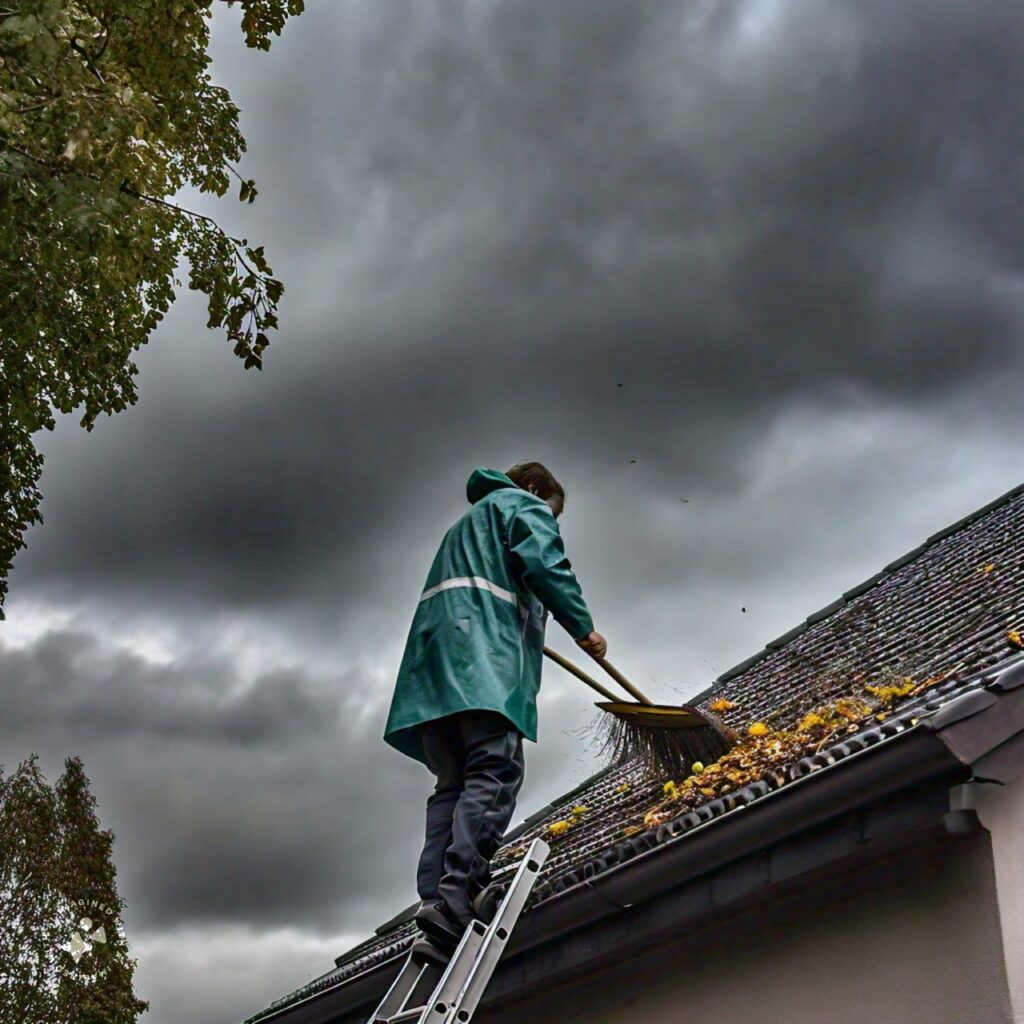
What You Need:
- Ladder
- Broom or leaf blower
How to Do It: Before heavy rain hits, clear any debris such as leaves, branches, or dirt from your roof. Use a ladder to safely access the roof and sweep or blow away debris. This prevents water from pooling and causing leaks.
Why This Happens: Accumulated debris on your roof can block drainage paths and create areas where water can accumulate, leading to leaks over time.
5. Install Temporary Gutters or Downspouts
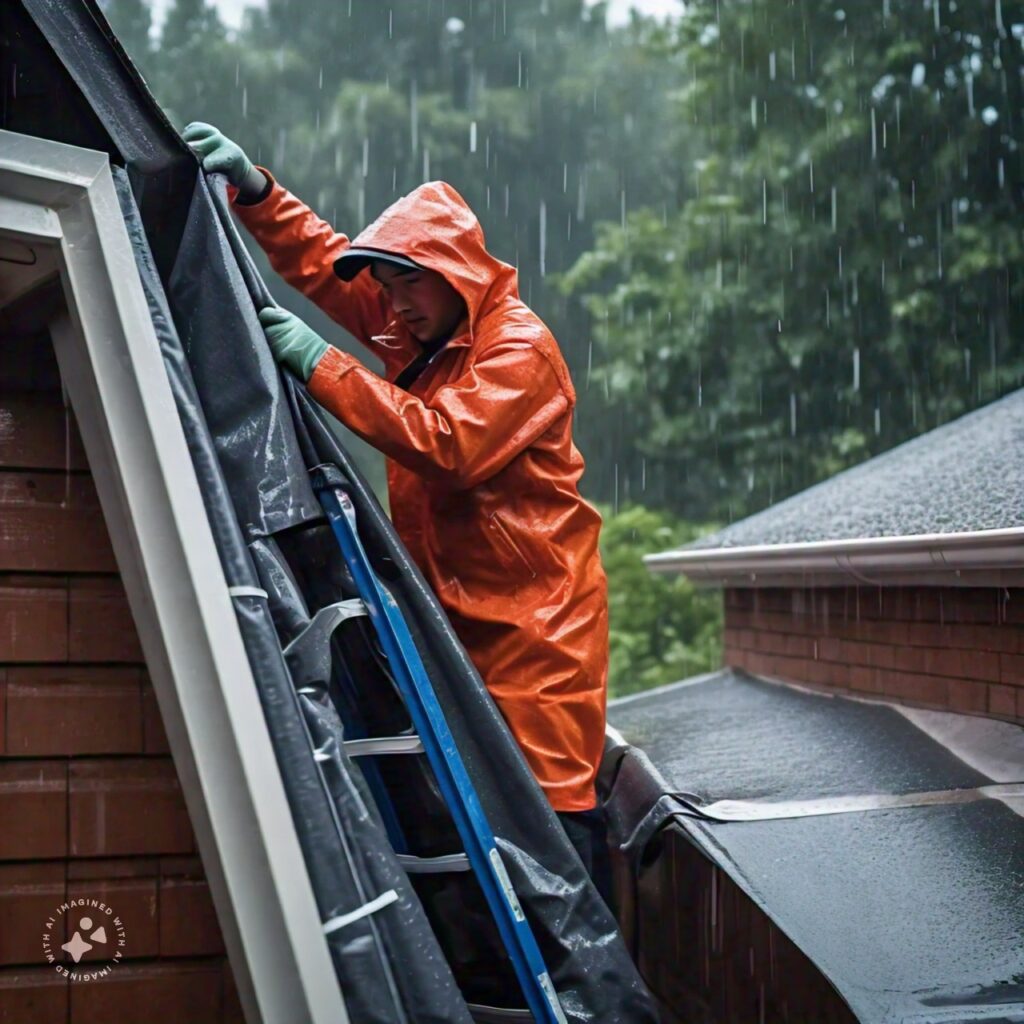
What You Need:
- Plastic sheeting or large buckets
- Zip ties or bungee cords
How to Do It: If your gutters or downspouts are damaged or missing, improvise by creating temporary ones. Lay plastic sheeting along the edge of the roof to direct water away from the foundation. Secure it with zip ties or bungee cords to prevent it from blowing away.
Why This Happens: Broken or missing gutters and downspouts can cause water to overflow and seep under your roof, causing leaks.
6. Apply Emergency Roof Patch
What You Need:
- Emergency roof patch kit
- Putty knife
How to Do It: Emergency roof patch kits are designed for quick repairs during rainy weather. Follow the instructions on the kit to apply the patch over the leaking area. Use a putty knife to spread the patch evenly and ensure it adheres well to the roof surface.
Why This Happens: Sometimes, unexpected weather or accidents can cause sudden roof damage that needs immediate attention to prevent leaks.
Causes of Roof Leaks During Heavy Rain
1. Poor Installation: If your roof wasn’t installed correctly, it might have weak spots that leak during heavy rain.
2. Damaged Shingles or Tiles: Broken or missing shingles/tiles can allow water to seep through your roof.
3. Clogged Gutters: When gutters are blocked, water can back up and seep under the roof, causing leaks.
4. Ice Dams: In colder climates, ice dams can form at the edge of the roof, causing water to back up under shingles and leak into your home.
5. Aging Roof Materials: Over time, roofing materials can deteriorate due to exposure to sun, rain, and wind, leading to cracks and leaks.
6. Structural Issues: Poorly constructed roofs or those with weak support structures can develop leaks during heavy rain due to stress and movement.
About Me:
Types of Leaks and Their Fixes
1. Flashing Leaks:
- Cause: Flashing is the metal used to seal areas where the roof meets a wall or chimney.
- Fix: Replace damaged flashing and seal it with roofing cement.
2. Shingle Leaks:
- Cause: Cracked or missing shingles let water through.
- Fix: Replace the damaged shingles and apply roofing cement.
3. Vent Pipe Leaks:
- Cause: The rubber around vent pipes can deteriorate.
- Fix: Replace the rubber boot around the vent pipe and seal it with roofing cement.
4. Skylight Leaks:
- Cause: Improper installation or aging seals around skylights.
- Fix: Apply fresh caulking or sealant around the skylight frame to prevent water infiltration.
5. Valley Leaks:
- Cause: Valleys where two roof planes meet can collect debris or wear out faster due to water flow concentration.
- Fix: Replace damaged shingles in the valley and ensure proper sealing with roofing cement.
6. Condensation Leaks:
- Cause: Poor ventilation in the attic can lead to condensation, which mimics a roof leak.
- Fix: Improve attic ventilation or install a vapor barrier to reduce condensation buildup.
FAQs- Roof Leak During Heavy Rain
Q: What should I do if I notice a roof leak during heavy rain?
A: Act quickly to minimize damage. Place buckets or containers under the leak to catch water and consider using a tarp or plastic sheeting as a temporary fix until professional help arrives.
Q: How can I temporarily fix a roof leak from inside my home?
A: You can use waterproof caulk and plastic sheeting to seal the leak from inside. This helps prevent water from entering your living space until a professional can assess and repair the roof.
Q: Why does my roof leak during heavy rain?
A: Roof leaks can occur due to various reasons such as damaged shingles, cracked flashing, clogged gutters, or poor roof installation. Heavy rain exacerbates these issues by finding weak spots in your roof’s defenses.
Q: Can I repair a roof leak myself or should I call a professional?
A: Temporary fixes like applying roofing cement or sealant tape can be DIY-friendly. However, for permanent solutions and to ensure safety and thorough repairs, it’s best to consult a professional roof waterproofing service.
Q: How can I prevent roof leaks during heavy rain in the future?
A: Regular roof inspections, cleaning gutters, replacing damaged shingles promptly, and ensuring proper attic ventilation are key preventive measures. These help maintain your roof’s integrity and resilience against heavy rain.
About Me
I’m your trusted handyman in Singapore specializing in comprehensive roof repair and maintenance services. With 20 years of experience, I offer a range of solutions including fixing leaks, replacing damaged shingles, clearing gutters, and ensuring proper ventilation.
I am dedicated to providing top-quality craftsmanship and personalized service to ensure your roof remains durable and weather-resistant. Whether you’re dealing with a minor repair or need a full roof inspection, I’m here to help you safeguard your home from the elements.
